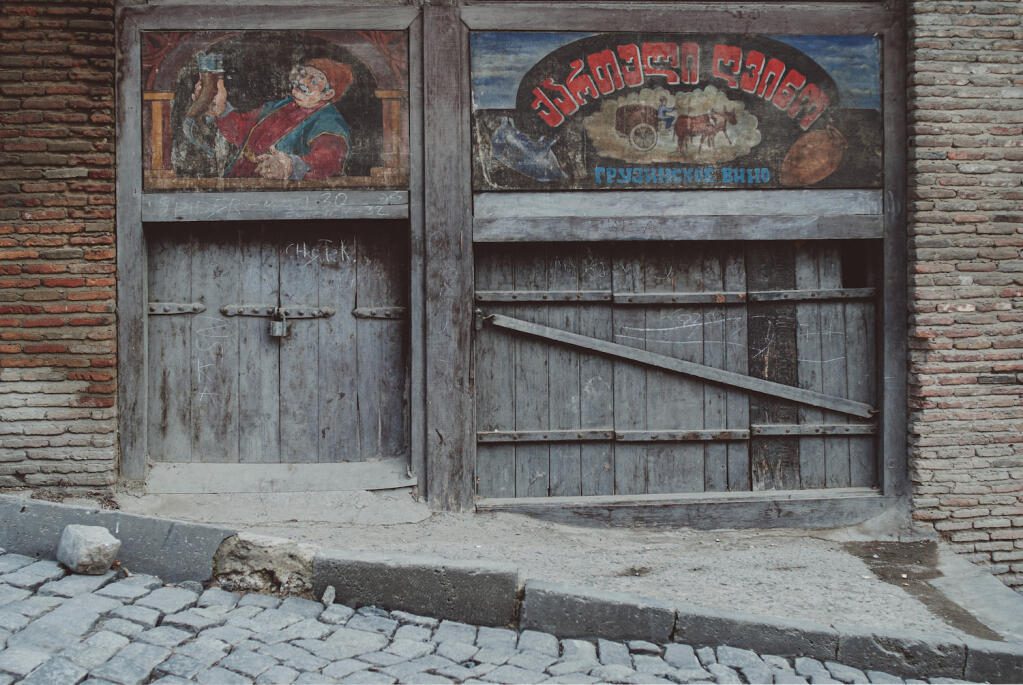The Real Origin of Wine in South East Europe
Contrary to popular beliefs, wine did not originate in France.
Archaeologists found wine residue dating back to over 8,000 years ago in Georgia. It is said that the people of modern-day Georgia discovered that grape juice ferments to wine after it was buried underground during the winter months.
You may be familiar with the terms “old world” and “new world” when it comes to wine, referring to Europe and everywhere else, respectively. It’s a colonialist perspective, although sommeliers have adopted these terms when discussing winemaking regions and styles based on the origins of modern viticulture. However, Georgia and surrounding regions are actually “ancient world” wine producers, giving credit where it’s due to the true origins of winemaking.

An old wine shop in Tbilisi. Photo by Egor Myznik.
Funny enough, some of the “hip” wines that are trending in the market today, like orange wine and ancestral sparkling wine are based on ancient winemaking techniques.
In the Ancient World, white wine grapes would be fermented with their skins on for more structure. Nowadays, it’s what we know as orange wine.
Ancestral method sparkling wine has its secondary fermentation in the bottle with live yeast cells that die and become lees. The secondary fermentation results in carbonation while the lees impart a toasty aroma, as is the case with all traditional method sparkling wines. However, in the modern traditional method, the lees are removed before the bottle is corked and sold to you. Meanwhile, ancestral method sparkling wine is sold to you unfiltered, just as it was enjoyed thousands of years ago.
Most of the wines that you’ll find from the ancient world are made using modern winemaking techniques. If you haven’t already tried them, browse the selection at your local wine shop! Cheers.
Read more about the archaeologists’ findings here.
The World Traveler: Hungary
SEEfest Staff Writer | September 14, 2014, 11:28 AM
Kohary Winery – Eger, Hungary
Courtesy of Cathy and Carey Roth
We were on a Rick Steves’ Tour of Eastern Europe which included Hungary. Our tour bus pulled into the lovely vineyards and winery building where a fine lunch was served as we sampled the surprisingly good wines of Kohary. A wonderful violinist, Tony, serenaded us with soaring classic and contemporary melodies. The sun was bright and the setting was perfect to enjoy Hungarian country hospitality.


Gelato!
What a surprise! Krakow had by far the best gelato in Eastern Europe! We enjoyed the all-natural flavors and beautiful colors of their luscious creations! Who could resist? The shopkeepers tempted us with their wares overlooking the sidewalks, sometimes more than one per block! They used local summer fruits we wouldn’t find at home. Gelato was our afternoon treat.
In the evening, we dined at a charming outdoor restaurant on the square. Part of the ambiance was that the whole square was lined with such restaurants, so we were one of many couples having a romantic meal. From our table we could see the shiny white horse-drawn carriages going by. The horses were large, strong, and handsome; none of the run-down kind we’ve seen in many cities. We had already taken the carriage ride up to the castle to get the view. Later we walked down the cobblestone street to our hotel.
We also tasted Krakow home cooking at the Milk Bar, a hold-over from Communist days when people needed cheap food. It is still super inexpensive ($4.00 for lunch), and super good: a large roasted chicken leg, mashed potatoes, and choice of salad. Yum!


Support international cinema in Los Angeles and new film talent from South East Europe. Donate here!

